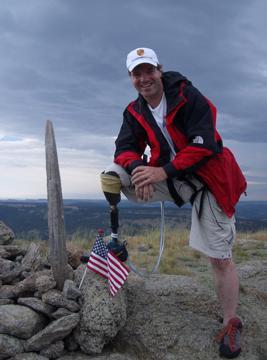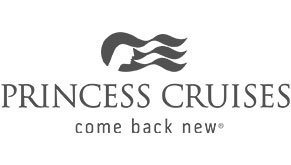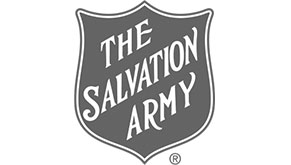
National Gallery for America’s Young Inventors Ceremony
PROFILES IN EXCELLENCE
 Todd Huston, our 2004 Keynote Speaker for the National Gallery for America’s Young Inventors Ceremony, is a world-record breaking athlete, inventor… and amputee. We are proud of his accomplishments and continuing contributions to our young people.
Todd Huston, our 2004 Keynote Speaker for the National Gallery for America’s Young Inventors Ceremony, is a world-record breaking athlete, inventor… and amputee. We are proud of his accomplishments and continuing contributions to our young people.
Todd Huston is our 2004 Keynote Speaker for the National Gallery for America’s Young Inventors Ceremony. We are proud of his accomplishments and continuing contributions to our young people!
Mr. Huston is an inspiring public-speaker with a story that will encourage you!
He became an amputee after a severe accident in his teens. In spite of the trauma, he climbed to the highest elevation in all 50 states in the “Summit America” expedition, breaking the world record in speed. Additionally, he holds the patent on a revolutionary prosthetic design, became an Eagle Scout, and has captivated audiences around the world with his powerful message of hope and love.
Mr. Huston is now a psychotherapist with several books, a podcast, a TEDx talk, and has been interviewed through many major news outlets and publications.
The National Museum of Education is grateful for Mr. Todd Huston and his leadership!
Friends in High Places
In June of 1994, my oldest friend, Todd Huston, began a project he called “Summit America”. Todd had a goal of breaking the record time for summiting the high points of all 50 states. The existing record was 101 days and was held by Adrian Crane, an ultra-endurance athlete. Adrian Crane has two legs; Todd has only one.


When Todd was fourteen years old, a boat ran over him, sucking both of his legs into the propellers. His left thigh was torn to the bone, the back side of his right leg was missing, and his right knee was sliced in half. The doctors were able to save both legs, but his right leg was paralyzed below the knee. The infection that plagued his leg for years led to the decision to amputate when he was 21. Todd is one of the toughest guys I know. His leg was amputated while he was wide awake. He asked to be anesthetized below the waist, and while he was talking to the doctor, they fired up the saw and amputated his right leg, below the knee. Anybody that tough can do anything they put their mind to.
I never treated Todd any differently than anyone else or showed him pity over what had happened to him. When he came to visit me in San Francisco 35 years ago, he hiked the hills all day on crutches. When my car wouldn’t start, I had him push it with one leg while I sat in the car and popped the clutch to get it going again. In hindsight, it was great training for his future.
Todd and I have always had each other’s backs, so when he ran into an unexpected challenge with his Summit America project, he knew who to call. Todd had initially invited me to be part of the expedition but I wasn’t able to take that much time off from work, so I’d had to say no. I offered suggestions regarding the sequencing of the climbs, including starting the time-clock at the summit of Denali in Alaska, the highest of the 50 high points at 20,320 feet. This suggestion changed the course of the climb and of Todd’s life.


By late July, Todd had successfully summited 46 of the 50 high points and was well on track to break the record. I had been following his progress and was really excited for him. On July 30th, the phone rang. There was a problem in Oregon. A week earlier, a team of 5 climbers on Mt Hood had fallen. Two had died and two had been seriously injured. Apparently, there was a problem with snow melting due to unusually warm weather, resulting in serious rockslides on the mountain. Todd had already arranged for a guide to take him up Mt Hood, but due to the conditions and the fatal accident the previous week, his guide pulled out at the last minute. Todd tried to find another guide, but no one was interested in taking an amputee up the mountain in conditions that everyone considered dangerous.
I had climbed Mt Hood 3 years earlier, and I knew that it was not a technical, challenging mountain. In fact, Mt Hood is the second most climbed mountain in the world, behind Japan’s Mt Fuji. Climbers of all levels have successfully summited Mt Hood. I knew I could help Todd get to the top. I told him that if he’d pay for my ticket, I’d take the first flight to Portland and we’d get it done. I took the next day off, and Todd picked me up at the airport at 9:30 AM.
We headed to the hotel, where we met up with Whit, Todd’s climbing partner on this expedition, and Lisa, who was in charge of community outreach and logistical support. I assured them that Todd would be safe and that we would have a successful climb and get the expedition back on track. On the way to the lodge, we visited a family whose little girl had recently had her leg amputated. Todd has always cared first and foremost about inspiring others; the climbing came second.


After dinner at the Timberline Lodge, as the sun was starting to set, Todd, Whit and I started our climb. We left about 8:00 PM, and climbed to Hogback Ridge, at 10,600 feet, where we made camp. Our camp consisted of three ledges that we made with our ice axes, just wide enough for a pad and sleeping bag. We anchored our sleeping bags with our ice axes, and then we slept from midnight to 4:00 AM. At 4:00 AM, when the snow was at its coldest and safest, we roped up and began our summit push.


The conditions were good. We came to an open crevasse with a narrow snow bridge. I crossed to the other side and anchored the rope to belay Todd and Whit. With one major obstacle behind us we now faced the crux of the climb – a steep narrow gully of ice and loose rock. I led the pitch. Todd and Whit were staggered behind. As debris fell from above, I repeatedly yelled ”ROCK!” to warn the climbers below me.
We traversed carefully across the mixture of snow, ice, rocks, and mud as we approached the summit and were welcomed by a beautiful sunrise. We had done it. With smiles, high fives, and cheers, we took our summit photos, signed the registry, and started our descent. It was a race against the sun to get Todd and Whit down the mountain before the snow got too soft and warm, my main concern was the softening of the snow bridge. Todd glissaded down much of the mountain to speed up his descent and save energy from using his prosthetic leg.


The clock was ticking. My flight back to Reno was leaving within hours of our summit. Once I got Todd and Whit got off the snow, I ran ahead and down the mountain to the Timberline Lodge to pack up our gear. Lisa and I loaded the truck and she revved the engine, urging Todd and Whit to hurry. They jumped in and we were off. Lisa had been tasked with getting me to the airport on time, and she took the challenge to heart, weaving the big red Ford pickup truck meticulously through the winding country roads. As we screeched to a halt in front of the airport, I said goodbye and wished Todd good luck, and then I ran for the gate. I arrived minutes before the flight took off, and was at work the next day.


Todd successfully completed his “Summit America” project on the summit of Mauna Kea, Hawaii on August 7th, setting a new record of 66 days, 22 hours and 47 minutes. He became the first and only disabled person to break and hold an able-bodied world record. This opened the door for him to receive exposure in global media and thousands of publications, including Sports Illustrated and all of the major television networks. CBS did a story on him ten minutes before the Super Bowl, which was seen by tens of millions of people. Todd has numerous awards including having been named on the list of Ten Outstanding Young Americans (along with Peyton Manning). He has spoken at the Sydney Opera House and has met with prime ministers and kings. A movie is currently in the works about his life and the “Summit America” project.
I was—and I remain—proud of Todd, and happy to have been able to help him achieve his goal. Since high school, Todd and I have been together through a lot of ups and downs in life. This was by far the best “Up”!
All In Podcast: Interview with Bill Hart

Todd Huston knows how to overcome incredible challenges. When his legs got caught in the propeller of a boat at age 14, his life was radically changed. Despite surgeries, he had to have one leg amputated.
Todd became a psychotherapist and clinical director of the Amputee Resource Center in California. He used his professional skills and personal experiences to help adults, adolescents and children achieve more in their lives.
Then he completed a world record-setting Summit America expedition by climbing to the highest elevations of all 50 states in only 66 days 22 hours and 47 minutes, shattering the original record by 35 days!
Todd is the author of the book “More Than Mountains: The Todd Huston Story” and has hosted inspirational radio and television programs.
For more information on Todd Huston, please visit his website at
“All In with Coach Bill Hart” is sponsored by Knowledge Coop, creators of absolutely brilliant training materials for the mortgage industry!
https://www.knowledgecoop.com/allin
Bill Hart is a coach at Building Champions in Lake Oswego Oregon. He is also the author of the book “White Collar Warrior: Lessons for Sales Professionals from America’s Military Elite”.
Podcast produced by Studio C Creative Sound in San Diego CA
Inspiration Matters Magazine
“I gave everything I had to overcome any physical or mental challenge knowing that it too will pass and I will be stronger and wiser after going through it.” – An incredible journey of a World record holder amputee mountaineer

Todd has overcome many challenges in his life and faced them with courage. He was challenged at an early age of fourteen when his legs were hurt in a boating accident which eventually led to the amputation of one of his legs. Todd soldiered on, finished his education and was fully engaged in helping others as a psychotherapist and clinical director of the Amputee Resource Center in California when he decided to take on a daunting challenge to set an example for others. Todd climbed the highest peaks in all 50 states of the USA while crushing the able-bodied record by 35 days. He has been featured in countless publications such as Sports Illustrated, Forbes, Wall Street Journal and has appeared on national and international television networks. Todd has been honored for his contributions and achievements with The Power to Dream Achiever Award, the Ten Outstanding Young Americans award, the Henry Iba Award for Citizen Athlete of the Year and the Everyday Hero Award by the American Red Cross to name a few. Todd has captured his remarkable story in his book More Than Mountains: The Todd Huston Story. He is also a contributor to the Huffington Post as well as being an inspirational radio and television host.
Thank you, Todd, for your time. Your interview will motivate all of our community. The interview with Todd Huston was conducted by Inspiration Matters () in July 2019. More Info
: What difficulties did you face during your “Summit America” climbing expedition? How did you face them?
T: I have faced many challenges due to my boating accident when 14 years old. These include having both legs cut by a propeller, losing my life twice, having my leg amputated while awake and all the physical recovery. What is more challenging than the physical challenges is dealing with the mental challenges we face in life. I had to face them a day at a time with whatever resources I had at the time. It was not always easy but I found that the challenge never seems as hard after you have gone through it. So I would try not to get discouraged as I gave everything I had to overcome any physical or mental challenge knowing that it too will pass and I will be stronger and wiser after going through it.
: What topics do you address in your inspirational speeches?
T: Lots of topics are discussed, from overcoming challenges, reaching your goals in life, overcoming fear, finding your path in life, the power of the mind, helping others while helping yourself, forgiveness, and the power of unconditional love. See this video
: Who can benefit from reading your book “More Than Mountains: The Todd Huston Story”?
T: I can’t think of anyone who couldn’t benefit from reading the book if they want to be inspired to overcome any challenge they face or reach a goal in their life.
: What challenges did you face during your school days? How did you motivate yourself to face those challenges?
T: Lots of self-esteem issues. I couldn’t play sports after the accident. I was crippled and scarred which caused me to lose confidence in dating. I missed lots of school so my grades suffered. Over time I reversed all of these, became the first disabled person to break an able body world record in sports-mountain climbing, graduated top of my class in graduate school and married a beautiful and wonderful woman.
: What are your other hobbies?
T: I love reading, hiking, playing with our five children and just about anything that life has to offer that is natural and loving.
: What is your favorite place to visit? What do you love about that place?
T: Alaska! It’s an amazing place. It’s Colorado on steroids. Stunning beauty, vast spaces, wonderful wildlife and larger than life experiences. It is a small town in a big state with some amazingly friendly and resourceful people. Love it!
: What is your suggestion for families of children with disabilities to empower their children?
T: Ask yourself how this can be a blessing for your child, for yourself and for others. There is always good in everything but it is your responsibility to do your part to find it and make something good happen from it. Everyone has greatness within them and the greatest power in all of us is unconditional unlimited love. Give it to your child, let them express it to you and others and the world will be a much better place for all of us.
: What tips/advice do you have for those in our community who want to overcome challenges?
T: Be kind to everyone. We all have something to offer to one another. We are all connected and we need one another. If you see someone that needs help, reach out with the love in your heart and help them. You have enough power and strength already within you to change the world.
: Any special message for our community?
T: Yes, Life is a lesson of love. Every person you meet and know, every situation you experience whether great or small is an opportunity to learn and choose love. Practice throughout the day to have every thought you have be your most loving thought, every word you say be your most loving words and every act you do be your most loving action. Do this every moment, and you can do anything for one moment, throughout the day and your life and you will help others reach great heights and reach the great heights that you were always destined to reach. See you at the top! Click here for Orginal interview
ABC Tulsa Interview
Todd Huston, a motivational speaker, and author, was prescribed one round of painkillers after an accident and another when things got worse; Monday, August 26, 2019 (KTUL)
TULSA, Okla. (KTUL) — Todd Huston was many things as a young man: a football player, an eagle scout, and a patient.
“I was behind a boat when I was 14, on Lake Tenkiller here in northeastern Oklahoma, when the boat slipped into reverse, and I got caught in the propellers,” Huston said.
He was rushed to the hospital.
“I actually flatlined on them twice that day,” he said.
He was prescribed one round of painkillers after the accident and another when things got worse.
“I had to have my lower leg amputated because of complications, and I had to go through another round of painkillers to deal with that situation,” Huston said.
That is when Todd started down another path.
“It’s very innocent, how you can get addicted to these things,” he said. “It’s not like you go out and say, ‘I’m gonna get addicted to these things.’ What happens is you get prescribed the medication, you need it. You can be in a lot of pain. You start taking the medication, and it helps.”
But occasional doses quickly turn into taking the medications all the time. Huston was self-aware enough to one day quit the pills cold turkey. He hasn’t had an opioid in years, even when he’s had access to them.
“Last week, I had some dental work done, the doctor prescribed oxycontin to me,” Huston said.
Huston says today’s verdict is promising if the money makes it to the right places to get people to help, but willpower is the most valuable tool.
“We will never, no matter how much money we get, we will never kick the drug addiction problem in Oklahoma until the people in Oklahoma decide they don’t want to be drug addicts.” Click here for Orginal Story
Keynote Speech Boy Scouts of America Nat’l Meeting 2019
Boy Scouts of America
2019 NAM Americanism Breakfast Todd Huston from Boy Scouts of America on Vimeo.
Todd’s TED TALK
One Leg, Fifty Mountains, And The Power of Love
How do we respond when tragedy strikes? Many respond with despair, grief, and uncertainty, but Todd Huston challenges us to respond with the power of love. Todd illustrates how this power guided him from the depths of extreme challenges to his world-record mountain climb throughout the US, and now a global vision to spread unconditional love throughout the world.
Calgary Breakfast Television Interview
TODD HUSTON SHOWS US THE POTENTIAL OF THOSE LIVING WITH A DISABILITY
August 3, 2016 08:11
Amputee and world-record-holding mountain climber, Todd Huston, talks about the true potential of those living with a disability.
Todd on Breakfast TV
https://www.btcalgary.ca/videos/5069521640001/
Climb Every Mountain // One-Legged Climber Scales the Highest Peaks in All 50 States
Bill Underwood
Mar 1, 1995
Todd Huston understands the value of perseverance.
Last year the 33-year-old South Tulsan scaled the highest peaks in all 50 states in record time — and with only one leg.
Accompanied by a friend, Huston attained the highest elevations in all 50 states in 66 days, 22 hours and 47 minutes, shattering the world record of 101 days set by a two-legged mountain climber.
Since that accomplishment, Huston has become an overnight celebrity. He has appeared on ABC, NBC, CBS, and CNN and has been covered in newspapers such as The Los Angeles Times, The Washington Post and The Wall Street Journal. In January Huston spoke to an international television audience when he was Robert Schuller’s guest at The Crystal Cathedral. In April he will be the subject of a feature article in `Sports Illustrated.`
Huston is also in demand as a motivational speaker, taking his message of triumph over adversity to schools, churches, and businesses all across the country.
Leaving no mountain unclimbed, he recently co-authored `More than Mountains,` an autobiography of his adventures in mountain climbing.
The book was released in January and currently is available locally at Novel Idea bookstores.
When Huston was 14, he was involved in a boating accident at Lake Tenkiller that nearly killed him and cost him the use of his right leg. Huston was swimming in the lake when his legs got caught in the propellers of a boat.
`I actually died twice, once in the emergency room and once on the operating table,` Huston said. `Because I lost so much blood, my heart had stopped.`
The accident severely damaged Huston’s sciatic nerve, resulting in paralysis of his right leg below the knee. He also had lost a lot of muscle tissue.
Doctors told Huston’s parents Huston probably would never walk again. He proved them wrong, but the absence of feeling in his leg resulted in a variety of health complications throughout the next few years.
`I could step on a nail and not even know it,` he said. `And that would literally happen sometimes. I’d pull my shoe or boot off and there would be blood everywhere.`
Huston frequently developed sores and infections because of his leg injury until, at 21, he decided to have it amputated below the knee.
`That took care of all the paralyzed part of my leg,` he said. `No more sores, no more blisters, no more infections. I had to choose to have a life and a lifestyle instead of a leg.`
With the help of a bulky and uncomfortable artificial limb, Hustongraduated from the University of Tulsa with a bachelor’s degree in business and moved to Balboa Island in Orange County, Calif.
In California, he earned a master’s degree in clinical psychology and worked with young people in clinics throughout the SouthernCalifornia area. While there, he met and married a woman from NewZealand who left him after two years of marriage.
`When her immigration status changed and she became a legal resident of the United States, I came home one night after church and she had disappeared,` he said.
Although crushed by this development, Huston emerged from his despair with a new sense of purpose. After prayer and thoughtful consideration, he decided to utilize his counseling skills to help amputees.
Before long, he was counseling amputees and speaking to groups of physicians on how to best meet the needs of their amputee patients.
It was while doing this work that Huston learned about the 50Peaks Project. The independent promoter of this project was trying to find five disabled individuals who would climb the highest elevations in all 50 states. Huston knew nothing about mountain-climbing, but the idea interested him.` Before I was injured I had been an Eagle Scout, so I thought,
‘Maybe I’d like to do it,’` he said. `So, I thought about it and then, right at the deadline, I submitted my application. I prayed about it and said, `God, if you want me to go I’ll go, but if youdon’t that’s fine with me because these are some serious mountains.`
Huston received a letter saying he had been chosen as one of the five people for the project. Over the next year, he trained tirelessly in preparation for the climbs.
Assisting him was Fred Xalokar, a professional mountain climber and an old schoolmate of Huston’s from Memorial High School.
The first mountain climb was scheduled to get underway on April 1994, but one month before departure, funding for the project fell through. Never one to give up, Huston found a way to continue the project on his own.
`I said, ‘Look, I’ll just go get my own money and I’ll do it myself,’` he said. `I was able to raise about $12,000 in a few weeks.`
Whit Rambach, a friend, accompanied Huston on the climbs. Xalokar also joined him on several of the climbs.
The project was scheduled to begin with Hawaii and end atop Mount McKinley in Alaska. Unfortunately, more than halfway through the project, Huston learned that the original schedule had been planned poorly and his group had to start over again.
`They said to start in April, so I went ahead and started in April,` he said. `All of a sudden it became very apparent to me that the
The Northeast was really in bad shape. We couldn’t even get into some of the parks to go climb them, and the mountains in the Western states were full of snow. We had started climbing way too early.
`So, I went and climbed Mount McKinley after doing 33 states and started the clock over again on June 1 at 5:10 P.M. At that point, we hurried down Mount McKinley, went back and re-did all those states, and then picked up the ones in the Northeast.` Sixty-six days later Huston completed his quest by reaching the 13,796-foot summit of Mauna Kea, Hawaii’s tallest mountain.
In January, Huston left California to return to Tulsa, where he now shares a South Tulsa office with his father, Bill Huston, president of Huston Lumber Sales. Through his newly established business, Huston Resources, Huston coordinates his many speaking and promotional engagements across the country and throughout the world.
Last week he spoke at events in Salt Lake City, Sun Valley, Idaho, and New Orleans. Huston said he is happy to be back in Oklahoma.
`My family is here, and I realized there were a lot of economic advantages to living in Tulsa,` he said. `One, the cost of living is much cheaper than in California — and also the cost of business. Oklahoma is much friendlier to do business in than California.
`Tulsa is also more centrally located. I do so much traveling that every time I do something east of the Rockies it’s a full day, then a full day to get back. It’s not good time management to have to spend so much time flying from one end of the country to another.`
In March, Huston will travel to Australia for several speaking engagements. While there, he plans to climb the country’s tallest mountain, Mount Koscioski, to kick off his world mountain-climbing tour.
His plans are to climb the highest mountain in every country in the world. Unlike the 50 Peaks project, he will not attempt to break any world time records accomplishing this task. Huston also has a new woman in his life, a childhood friend he ran into at church.
Huston attributes his success to an inner fortitude and determination that comes from his faith in God.
`With psychology, you can change people’s environment, but unless they have something spiritual, faith in God and a direction that comes from a higher source, it’s kind of like you have the whole formula, but you’re missing that one little piece and it all crumbles,` he said.
`It may work to a certain point and then it crumbles, and it may seem as if it’s working but it doesn’t. There is no solid ground to it.
`It’s like going three-quarters of the way up the mountain and saying, ‘We’re at the top.’ You don’t get the feeling of being on the summit until you are standing there.` Full Article
























































